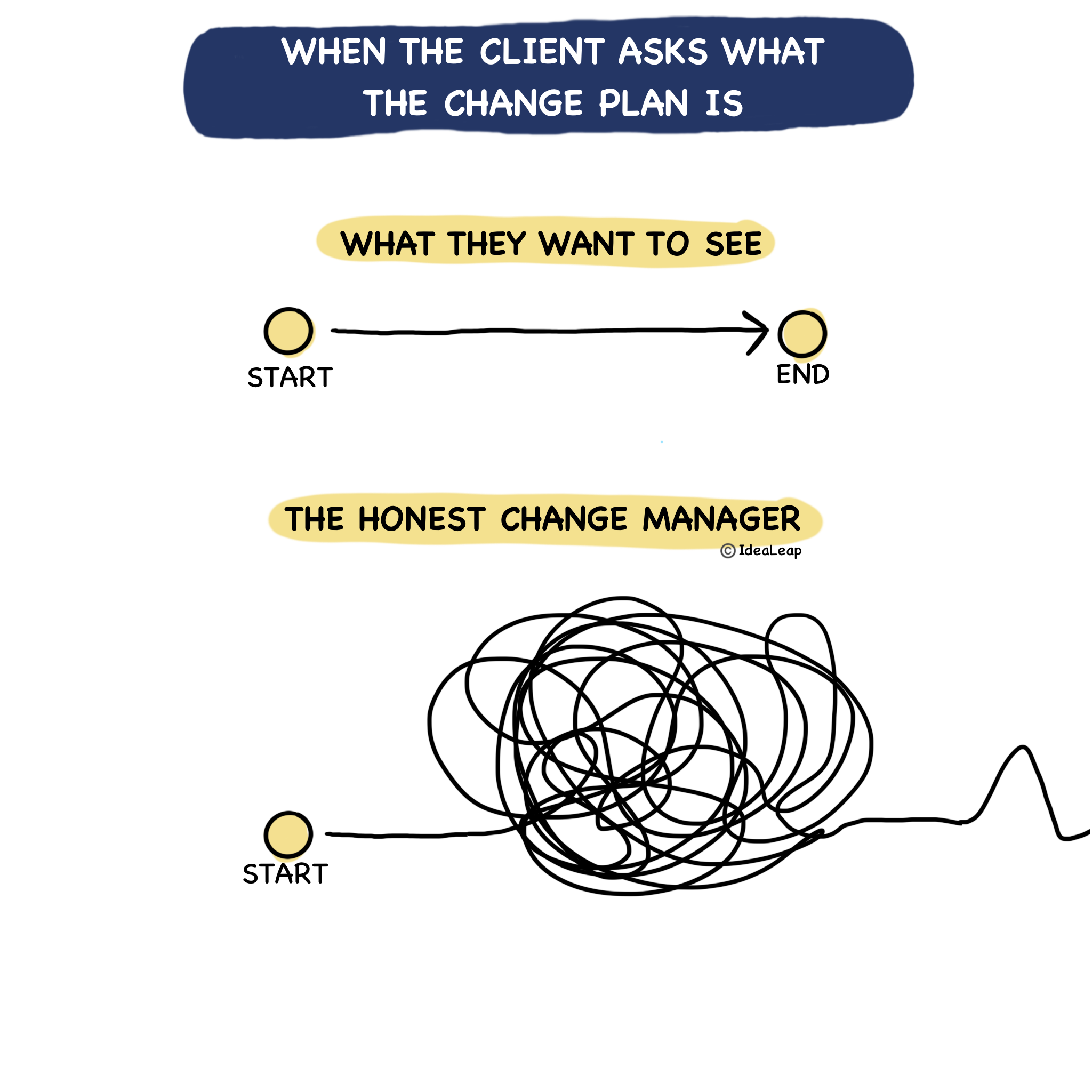Complexity: The Most Important Concept for Change Managers in the 21st Century
CONTEXT
Let’s perform a thought experiment.
Imagine that you are the change lead for a major initiative that recently went live.
The initiative was a major success. Employees have embraced the system at go-live, adoption and utilization are high, and the organization is already realizing tangible benefits.
Now imagine that you get contacted by your organization's main competitor.
They are about to kick off the same initiative, they've heard about the phenomenal results that you achieved, and they want you to lead their change team.
You're not really looking to make a move, but they offer you a big, fat, juicy contract and promise you all the resources you will need.
Shit just got real.
This is an offer you can’t refuse. You’re about to sign the contract when you notice some fine print at the bottom.
That fine print requires that you, as the change lead, guarantee that you will achieve the same change management outcomes as you did for the same initiative in your current organization.
If you don’t, then they have the right to claw back 50% of the contract value from you.
Do you sign that contract?
Over the years, I have performed this thought experiment with hundreds of change agents from around the world, and not once has anyone said that they would sign that contract.
When asked why they wouldn’t sign the contract, typical responses are:
“Because every organization is different.”
“No one can guarantee change outcomes.”
“Different organizational cultures.”
While all of these responses have elements of truth, they are grasping at the edges of what, in my view, is the #1 concept for change agents to understand, accept, and learn to manage if they are to successfully help organizations navigate the 21st century (and no, it's not AI):
Complexity.
THE BIG IDEA
All organizations are complex adaptive systems (CAS).
In a CAS, change diffuses in ways that are emergent (patterns arise from interactions within the system) and non-deterministic (it does not follow a single, clear path or outcome).
In a CAS, change can emerge in unforeseen and unplanned ways because it is influenced by the connections and interactions within the organization.
Unlike mechanical systems, where inputs and outputs can be predicted and linearly mapped, complex adaptive systems are characterized by their non-linearity—the path and outcome of change are not directly related to to the amount of the change management effort.
That’s right. We have way less control over change than our detailed change plans would lead us to believe.
In CAS, change is emergent—it is the result of everything and everyone being interconnected in ways we can’t fully understand, which can lead to unplanned outcomes and results.
It is the unique conditions within each "jar"—analogous to an organization's culture, people, processes, and current state—that determine how that change will evolve.
In a CAS, organizations are constantly changing and evolving, which means that no change has ever been done in the context that it's being done in now, and it never will be again.
As with the dye in the jars, change does not follow the exact same path twice.
HOW I HANDLE THIS CHALLENGE
While far from an exhaustive list of ideas for managing complexity, the following mnemonic I have developed is a useful starting point – ACE:
Accept complexity
Cede control
Experiment & adapt
Accept Complexity
Accept the realities of complexity and what it means for change management because once you do, you can never look at change management the same way again.
Viewing change management through the lens of complexity reveals the fallacy of big upfront planning, linear change processes, and the illusion of control.
Hopefully, accepting complexity also ignites a curiosity and drive in you to explore the topic further.
Example: Embark on a journey to self-educate and understand complexity deeper. An excellent book to read on complexity in business is "It's Not Complicated" by Rick Nason.
Cede Control
Change can’t be controlled in complex adaptive systems—it can only be influenced.
This requires shifting your stance from that of a "manager" to one of a facilitator and coach, whose role is to guide and support the organization through the process rather than attempt to dictate it.
Example: Perform stakeholder contracting much like you would perform sponsor contracting. Facilitate a ways-of-working conversation to align on what is the responsibility of leadership and change management, and what is the responsibility of the impacted people to support and implement the change?
Experiment and Adapt
In complex adaptive systems, there are no right answers—there are an infinite number of possibilities for how a change could unfold.
However, patterns for success emerge through the execution of continuous, safe-to-fail experiments.
We can’t control or predict how change will diffuse; we must poke the system, observe the feedback, and then adapt the change approach based on the feedback.
Example: Apply an Agile mindset and approach to change work. Plan more often in shorter time horizons and in smaller chunks—for example, what you want to achieve in the next 30 days.
Act in small increments—choose three key things to do each week that will move you towards the goal outlined in the plan.
Review and adapt continuously—inspect your results weekly and course-correct as required.
Oh, and one last thing - complex ≠ complicated - but that's a subject for another newsletter!




